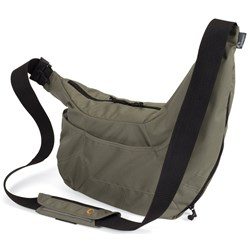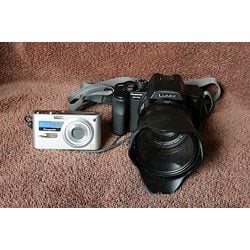After 70 hours of research and testing over three years, including real-world shooting a few of the top contenders, the Olympus OM-D E-M10 II is what we recommend for most people looking for a high-performing mirrorless camera program without breaking the bank. The E-M10 II locks focus on topics fast, is compatible with over 70 lenses, and has built in image stabilization that works with each lens.
 |
Olympus OM-D E-M10 Mark II with EZ Lens
Best pick The Olympus E-M10 II offers quick focus, built-in picture stabilization, and access to a wide assortment of compact, high-quality lenses. It delivers images in a conveniently package. |
This Micro Four Thirds camera can’t equal the top cameras with physically bigger APS-C sensors in regards to critical image quality, but it comes reasonably close if you’re shooting in good light. And no APS-C rival comes in a camera/lens package as streamlined as the E-M10 II. The camera’s retro-style controls, paired with a touchscreen and an exhaustive set of customization options, make the E-M10 II among the better managing cameras in its class.
The E-M10 II not only takes great pictures, it is fast to acquire attention, locking onto issues almost immediately with none of the wobble or focus-hunting we’ve often seen in older mirrorless cameras. Even when reduced light levels induce the AF (autofocus) method to slow a little, its precision remains reliable, giving you confidence after each shutter press that you captured a sharp, crisp picture. A robust image-stabilization system lets you get sharp handheld shots at shutter speeds as many as five stops slower than you would without a stabilization. And because Olympus houses its image-stabilization system inside the camera–most camera makers build it in to lenses–it is accessible regardless of which lens you use. And as a Micro Four Thirds camera, the E-M10 II is compatible with over 70 lenses, making sure you may expand your system as your photographic needs increase.
The Fujifilm X-T20 is a much more comfortable and more expensive option than our main pick. For the excess size and money, but you get some of the very best picture quality of any mirrorless camera under $2,000, especially when shooting at night or indoors under low light. Its hybrid AF system is not only fast, but better at locking focus on moving subjects in the central section of the framework than our top pick. You might also catch 4K video which, though lagging well behind the Panasonic Lumix DMC-G85 in features and image quality, is more than adequate for general use like school recitals and holiday travelogues. The X-T20’s clearly identifiable dials and buttons are arranged in a logical, retro-style design that lets you pick the camera up and begin shooting without a visit to the user’s manual.
The X-T20 is available in two different kit-lens bundles. We are recommending you spend the extra cash for the higher-end model of the two, since it includes the excellent XF 18-55mm f/2.8–4.0 R LM OIS zoom lens. This lens allows in more light than any apparel lens offered by Fuji’s competitions and delivers sharper pictures from corner to corner also. The lens has a very impressive image-stabilization system which allows you shoot handheld at shutter speeds as long as one moment and still get a usably sharp image.
The X-T20 will take up more room on your camera bag than our top pick, a gap that will only grow as you spend in longer lenses, even as Fujifilm lenses are larger than the equal Micro Four Third lenses. However, if class-leading image quality is the primary goal or you frequently shoot in moderate to low light, you can’t do much better than the X-T20.
Using its bulbous, DSLR-style shape, the Panasonic Lumix DMC-G85 isn’t as streamlined as our most important picks. But it shines from the video-shooting department. It captures broadcast-quality 4K video and lets you pull still pictures from that footage, too. On-screen focus and exposure helps you verify that your movie is sharp and properly exposed. The completely articulated touch-sensitive back screen lets you comfortably monitor the action even with the camera in an awkward place, and the microphone input allows you to use external mics to capture top audio audio. If you plan to shoot video almost as frequently as you shoot stills, the G85 offers the most satisfying combination of affordability and functionality in its class.






